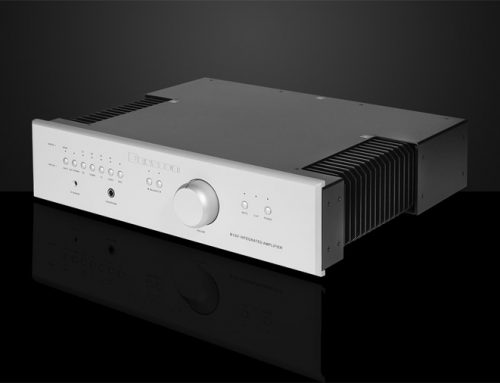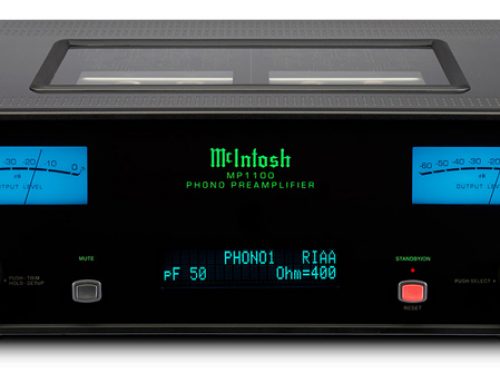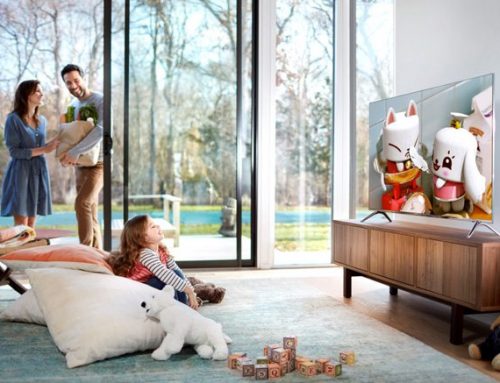
Speakers are the windows to our sonic landscapes. Choosing speakers is the most personal decision that you’ll have to make when putting together a stereo or a multi-channel home theatre system. Every speaker has different sound characteristics and most people have strong opinions whether they like a particular speaker’s sound or not. Home theatre enthusiasts typically look for speakers that produce a clean sound and pack enough punch to reproduce today’s Hollywood soundtracks. Audiophiles search for speakers that reproduce the original sound as accurately as possible. The visual appearance also plays an important part when choosing speakers since speakers are often the most visually dominating component of a system.
Depending on your space, listening preferences and budget, you should begin by choosing the type of speakers that will work best for you. Speakers can be divided into five basic categories: conventional “full-size” speakers, satellite/subwoofer packages, on-wall and in-wall speakers as well as panel speakers.
Recently, some speaker makers have introduced designs that incorporate multiple channels in a single enclosure. These types of speakers use a room’s side and rear wall reflections to imitate separate speakers placed in the room. A single enclosure with a left, a centre and a right channel is typically referred to as an LCR speaker.
Let’s examine how speakers produce sound and what key specifications you should look at when shopping for speakers. I’ll also talk about how you can judge a speaker’s performance.
How Speakers Produce Sound
Every sound that we hear is made of a series of vibrations or pressure waves in the air. In an audio system, a source such as a CD player sends an electrical signal to an amplifier which then sends the signal to the speaker. This signal causes the cone drivers and dome tweeters (used in conventional speaker designs) to vibrate back and forth, reproducing the sound recorded on a CD.
The human ear can hear sound from approximately 20 Hz to 20,000 Hz. Most speaker designs use a tweeter with one or more woofers to produce sound. A crossover inside the speaker is responsible for splitting the incoming audio signal between all of the drivers of a speaker. More drivers in a speaker may look attractive but do not necessarily translate into better sound because crossover design is a tricky business.
A speaker capable of reproducing frequencies from 20 Hz to 20,000 Hz is referred to as a full frequency response speaker. These are usually large, floor-standing speakers that produce clean, realistic sound. They also tend to be expensive.
Most speakers, however, do not reproduce the entire range that is audible to us. The majority of floor-standing speakers will play from about 35 Hz to 20,000 Hz. Bookshelf speakers usually handle frequencies from about 50 Hz to 20,000 Hz.
Many modern speaker systems, especially in the home theatre, use a subwoofer to produce the bass notes ranging from about 150 Hz all the way down to 20 Hz. Most modern subwoofers are powered, meaning that they have a built-in amplifier. They usually also have an adjustable crossover that allows the user to set the subwoofer’s upper frequency response to blend in more effectively with the main speakers.
Speaker Specifications
If you want to hear every sound in the recorded material, your speaker system should have a frequency response from 20 Hz to 20,000 Hz, whether composed of just two large speakers or smaller speakers paired with a subwoofer. Some subwoofers can play even lower than 20 Hz and some speakers can play higher than 20,000 Hz. The frequency response rating of a speaker is always followed by its variation from “flat”, expressed in decibels (dB). The smaller the variation, the more flat or accurate the speaker’s response. Variances usually range from +/- 5 dB to +/- 3 dB.
The sensitivity or efficiency of a speaker, measured in dB, will tell you how loud a speaker will play for a given power input (standardized at 2.83 volts or 1 watt into 8 ohms). This specification is important because it will give you an idea of how powerful an amplifier you will need to drive the speakers. Most speakers have a sensitivity rating between 85 dB and 98 dB. Keep in mind that sensitivity is measured on a logarithmic scale. A 3 dB difference of sensitivity translates into a 2 to 1 power requirement difference. For example, a speaker with a sensitivity of 92 dB needs only half as much power as a speaker with a sensitivity of 89 dB, to play at the same volume.
Impedance is also an important specification to consider. Impedance is measured in ohms and refers to the resistance that an amplifier will encounter when driving the speaker. The impedance of a speaker does not stay constant – it varies with the speaker’s frequency. An amplifier can deliver more power into 4 ohms than it can into 8 ohms. However, the increased power will result in more heat being produced inside the amplifier. Generally, a quality amplifier will be able to drive 8, 6 or 4 ohm speakers with ease. A budget amplifier may shut down or fail if asked to drive speakers rated at 6 ohm or less.





